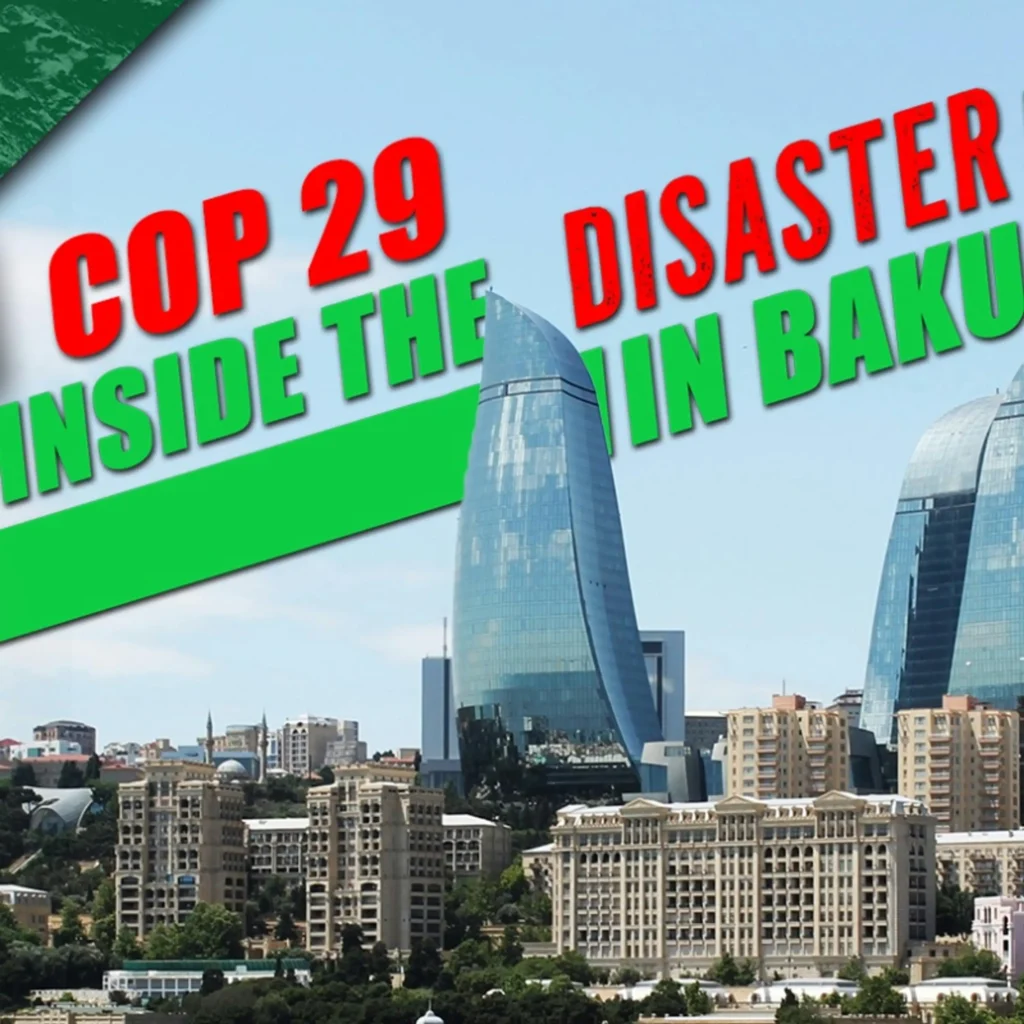Climate Change Weekly #151
The international global warming conference held in Lima, Peru in early December closely resembled previous climate change conferences. There were countless speeches. Developing nations requested pay-offs. Wealthy countries demanded more be done to reduce carbon emissions. And after seemingly endless negotiations, back-room meetings, and whispering, world leaders produced a common agreement.
This climate conference displayed the same old song and dance, but the agreement itself is quite different in three crucial ways compared to previous climate deals. First, for the first time, every nation agreed to set a timetable for reducing greenhouse gas emissions. Second, the schedule for emission reductions and the level of reductions will be set by each individual nation for itself. Third, there is no enforcement mechanism or guaranteed transparency. Instead, nations will be shamed into keeping whatever commitments they make, to the extent they make those commitments publicly.
That every nation agreed to adopt domestic plans capping and/or reducing greenhouse gas emissions is the only part of the Lima climate deal about which global warming alarmists are cheering.
Climate realists have long argued atmospheric carbon dioxide (CO2) levels will not fall until and unless fast-growing developing countries join developed nations in cutting emissions. Many developing parts of the world are now, or will be very soon, contributing more greenhouse gas emissions than the developed world. If developing nations don’t cut emissions, atmospheric greenhouse gas levels will continue to rise regardless of any emissions cuts undertaken by developed nations like the United States.
Alarmists are excited to have developing countries sign on to climate treaties for two reasons. First, climate change agreements slow the booming CO2-producing industries in developing regions, where CO2 emissions are growing fastest. Second, if developing nations sign on to climate treaties, developed nations can no longer refuse to reduce emissions based on the claim that doing so would create an unfair economic advantage for the developing world.
Despite alarmists’ hopes, global commitment also stands as the agreement’s Achilles heel. In order to get every country to agree to the deal, the Lima Accord lacks legally binding requirements that force any of the signers to cut emissions by any particular amount. Each country sets its own goals and timetables. Each nation is supposed to put forth a plan by the end of March 2015 laying out how much it will cut emissions after 2020 and what domestic policies it will pass to achieve the cuts. If countries miss that deadline, they are given until June to do so. The collected plans are to form the basis of a grand climate deal to be signed in Paris in 2015.
Without legally binding language requiring significant cuts, countries can put forth weak plans amounting to little more than lip service. For instance, one country could commit to cap – not cut – its emissions after 2050 and still be a party to the agreement. Another country could agree to cut emissions per unit of energy used over time, which would happen naturally as energy technologies become more efficient or old power plants are replaced by new ones, but it wouldn’t have to agree to any real cuts.
No emission reduction commitment, large or meager, is backed with the force of international law. There are no penalties for failure to meet greenhouse gas reduction commitments. Rather than trade sanctions, fines, or diplomatic censures, the Lima Accord relies on peer pressure or shaming to convince nations – who, of course, will quite possibly be led by very different governing parties in the future – to meet their greenhouse gas commitments.
Shaming and peer pressure rarely work on recalcitrant nations. Russia, for instance, has laughed off world condemnation concerning its invasion and annexation of parts of Georgia and Ukraine. China, with cameras rolling at Tiananmen Square, has never apologized or admitted wrongdoing for its numerous human rights violations, and it still detains many peaceful protestors. Warlords posing as legitimate rulers in various African nations continue to carry out atrocities and war crimes.
 |
The United States also has ignored international pressure. In the face of global condemnation for harsh interrogation techniques at Guantanamo Bay, the government has so far continued to refuse to shut down the prison. As Thomas Hobbes so succinctly and presciently said centuries ago, “Covenant without the sword are but words with no strength to secure a [country] at all.”
While a lack of legally binding mandates is likely detrimental to any hope for the accord’s future success, a lack of adequate funding is the final nail in the coffin for this international climate agreement.
Before Lima, developed countries had committed to helping less-developed nations transition to cleaner energy sources, to develop infrastructure, and to compensate them for alleged climate wrongs. The original commitment was for $100 billion, with a first installment of $10 billion. Of course, the United States, as historically the largest greenhouse gas emitter, is expected to bear the largest portion of the burden. President Barack Obama pledged an initial $3 billion payment, but Congress blocked the funds. If not enough guilt payments are forthcoming, how long will developing nations pretend to be committed to greenhouse gas cuts at the expense of development? My guess is not very long.
The only climate agreement that would make me happier than this one is one that asserts manmade climate change is a manmade fiction. The real problem isn’t that CO2 is going to destroy the planet; it’s that the world doesn’t use enough fossil fuels to further our mastery over climate conditions and other natural factors that lead to premature death, misfortune, and continued poverty.
SOURCES: The New York Times; The Telegraph (UK)
IN THIS ISSUE …
Climate science coalition calls for U.N. to stop climate work … Oil glut threatens green energy hopes … Climate change ethics … NERC blasts EPA clean power plant proposal … Gruberization of climate science … Alabama state climatologist challenges EPA power plant rule
CLIMATE SCIENCE COALITION CALLS FOR U.N. TO STOP CLIMATE WORK
The International Climate Science Coalition argues it’s time for the United Nations to get out of the climate change business. The United Nations’ “My World” survey of more than seven million people asked which of 16 international concerns was most important, and taking action on climate change ranked dead last among them. Even providing people with phone and Internet access ranked higher. Not only is climate change not a significant public concern, hundreds of scientists wrote to U.N. Secretary General Ban Ki-moon to explain why his commitment to make the battle against climate change his top priority displays a misplaced concern for a non-vital issue. Potential threats from human greenhouse gas emissions endanger far fewer people and pose less risk than myriad other problems facing rich and poor alike.
SOURCE: International Climate Science Coalition
OIL GLUT THREATENS GREEN ENERGY HOPES
The renewed abundance of oil worldwide poses a threat to the green energy revolution pushed by extremists who oppose fossil fuel use. Historically, consumers respond to cheaper gasoline by buying larger, more powerful, more luxurious vehicles and by driving more. In addition, lower oil prices and greater abundance lead to a decline in support for more expensive, less efficient biofuels. The oil glut also means the price gap between fossil fuels and renewable energy sources will expand, resulting in less support for continued subsidies and mandates for green energy. Environmental radicals’ pipe dreams of a green energy economy are going up in smoke as the public falls back in love with the freedom and prosperity cheap oil fosters.
SOURCES: The Independent (UK); Triple Pundit
CLIMATE CHANGE ETHICS
Few policy issues are as challenging to deal with as those related to climate change. An ethical choice must consider the limits of our knowledge, the magnitude and likelihood of risks posed by climate change, the long- and short-term benefits and harms that may result from a changing climate and policies meant to ameliorate its worst effects, and the likelihood of unintended consequences of climate policies.
SOURCE: Global Warming Policy Foundation
NERC BLASTS EPA CLEAN POWER-PLANT PROPOSAL
The North American Electric Reliability Council (NERC) was charged with undertaking an analysis of EPA’s proposed clean power plant rule and found the rule would threaten electric power reliability. The analysis determined EPA’s estimates for possible efficiency gains and new power plant construction were optimistic, and the short timetable for implementation of the plan would require too many power plants to be retired before replacement power plants, transmission lines, and other related infrastructure could be completed.
SOURCE: North American Electric Reliability Council
GRUBERIZATION OF CLIMATE SCIENCE
Tim Ball, Ph.D., explores the many similarities between Jonathan Gruber’s successful efforts to see Obamacare enacted and the tools and methods used by climate scientists to encourage policymakers to adopt policies restricting fossil fuel use. Among the similarities: Gruber used computer models to justify the need for Obamacare, just as climate scientists at the U.N. cite computer models demonstrating the need for international energy control. Gruber claimed his models were proprietary and refused to disclose the code he used. Climate modelers have made similar claims. Like Gruber, climate scientists wish to use what is essentially an academic undertaking – understanding the factors affecting climate – to produce normative public policy decisions without democratic input. As displayed during the Climategate email scandal, like Gruber, some climate scientists believe lying and suppressing inconvenient facts are acceptable actions if they lead to a slowing or reversal of global warming.
SOURCE: Watts Up With That
ALABAMA STATE CLIMATOLOGIST CHALLENGES EPA POWER PLANT RULE
John Christy, Ph.D., Alabama’s state climatologist, urged the Environmental Protection Agency to conduct original research to justify the physical science behind its Clean Power Plan, rather than just depend upon the work of the Intergovernmental Panel on Climate Change (IPCC). Christy acknowledges Earth’s climate is changing but points out climate change models are unable to discern the reasons for climate variation. Climate models don’t accurately portray past climate conditions, yet policymakers are asked to enact draconian legislation based on models’ predictions of future catastrophe. According to Christy, “We should have little confidence that the future will play out as the models suggest [because] the EPA cannot conclude it knows ‘why’ the climate system changes and thus cannot assert it will control ‘what’ the climate will do.” Christy argues EPA should establish a team of analysts not connected to the climate modeling industry to assess the state of climate knowledge and the range of responses in a transparent fashion.
SOURCE: Yellowhammer News





